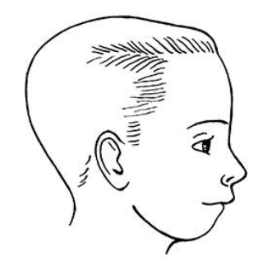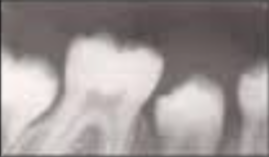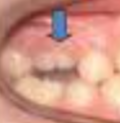CH16: Occlusion
1/37
There's no tags or description
Looks like no tags are added yet.
Name | Mastery | Learn | Test | Matching | Spaced |
|---|
No study sessions yet.
38 Terms
Occlusion
relationship between the 1st molars helps classify; the relationship of the teeth in the mandibular arch to those in the maxillary arch as they are brought together
Centric occlusion
maximum intercuspation or contact between the teeth
Maxillary is stationary, the mandibular is the one that moves (true/false)
true
Alignment and occlusion of teeth helps
-masticatory
-functionality
-speech
-esthetics
Normal occlusion
-Facial profile-mesognathic
-slightly protruded jaws; flat face appearance
-straight profile
What type of Class?
Molar relationship:
Mesiobuccal cusp of the maxillary 1st molar occluded with the buccal groove of the mandibular 1st molar; When you can’t use the permanent 1st molars to determine occlusion use the canines.
Canine relationship:
Maxillary canine occludes with the distal half of the mandibular canine and mesial half of the mandibular 1st premolar
Class I: mesognathic
Malocclusion
any deviation from the physiologic acceptable relationship of the maxillary arch and/or teeth to the mandibular arch/teeth
-Class II
-Class III
What class?
Molar relationship
The buccal groove of the mandibular molar is distal to the mesiobuccal cusp of the maxillary molar by at least the width of a premolar
Canine relationship
The distal surface of the mandibular canine is distal to the mesial surface of the maxillary canine by at least the width of a premolar
Class II: retrognathic

Something is referred to class tendency if it’s ___ than the width of a premolar
less
In class II, division 1 the maxillary incisors are _____; in division 2 the maxillary incisors are _____
protruded, retruded
What Class?
Molar relationship:
The buccal groove of the mandibular 1st molar is mesial to the mesiobuccal cusp of the maxillary 1st molar by at least the width of a premolar
Canine relationship:
The distal surface of the mandibular canine is mesial to the mesial surface of the maxillary canine by at least the width of a premolar
Class III: prognathic
Class I=normal occlusion, ideal occlusion, neutrocclusion, mesognathic, straight profile
Class II=distoocclusion, retrognathic, convex profile, deep overbite
Class III=mesiooclusion, prognathic, concave profile, underdite
Okie dokie
Malocclusions/malrelationships of dental arches include
-posterior cross bite
-anterior cross bite
-edge to edge bite
-end to end bite
-open bite
-overjet
-underjet
-overbite
Misalignment of teeth include
-labioversion
-linguoversion
-buccoversion
-supraversion
-toriversion
-infraversion
Posterior crossbite
maxillary or mandibular posterior teeth are either facial or lingual to their normal positions (unilateral or bilateral)
Anterior crossbite
Maxillary incisors are lingual to the mandibular incisors
Edge to edge bite
anterior teeth-incisal surfaces occlude instead of overlap
End to end bite
posterior teeth occlude
Open bite
lack of occlusal or incisal contact
Overjet
horizontal distance between labioincisal surfaces of the mandibular incisors and the linguoincisal surfaces of the maxillary incisors
Underjet
Maxillary teeth are lingual to the mandibular teeth
Overbite
vertical overlap by which the maxillary incisors overlap the mandibular incisors
Slight overbite
maxillary teeth fall on incisal third
moderate overbite
maxillary teeth fall on middle 3rd
severe overbite
maxillary fall on cervical 3rd
labioversion
tooth position toward lip

linguoversion
tooth positioned toward tongue

buccoversion
tooth positioned toward the cheek

supraversion
elongated, above the line of occlusion

toriversion
tooth twisted or rotated or turned

infraversion
depression/below line of occlusion

parafunctional activity
abnormal or deviated function
etiology of parafunctional activity
-clenching
-bruxism
-nail biting
-biting on objets
-lip or cheek biting
consequences of parafunctional habits
-accelerated tooth wear (wear facets, attrition
-pulpal involvement
-tooth movement
Occlusal trauma
trauma to the periodontium by dynamic or parafunctional forces that exceed the adaptive and reparative capacities
Primary occlusal trauma
excessive occlusal force on a tooth with normal bone support
Secondary occlusal trauma
normal or abnormal occlusal forces placed on a tooth with bone loss or inadequate alveolar bone support
Effects of occlusal trauma (clinical + radiographic)
Clinical-progressive change in tooth mobility, fremitus, sensitivity to pressure, chewing, percussion, tooth drifting, fractured teeth
Radiographic-widening of PDL space, root resorption, thickening of the lamina dura